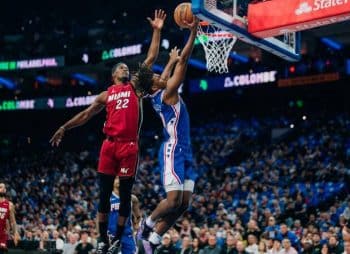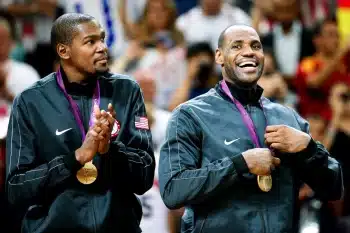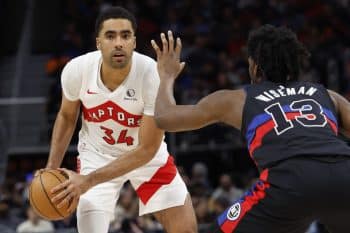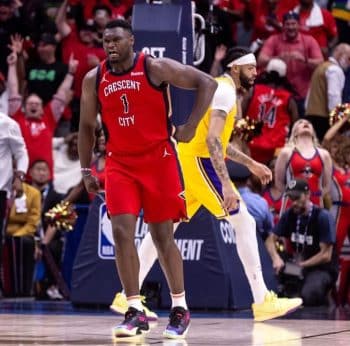NBA
NBA Daily: Fellow Title Favorites Can Exploit Lakers’ Weaknesses

The best start in franchise history didn’t cure what ails the Los Angeles Lakers, but it definitely seemed that way.
After losing the season opener to Southern California’s other team in thoroughly depressing fashion, the Lakers reeled off 20 wins over their next 22 games. They first did it with defense, combining game-changing size with veteran guile and a team-wide commitment to holding each other accountable. The offense, meanwhile, slowly and surely crept comfortably up from league average as Los Angeles waylaid overmatched opponents in November.
But even now, at fifth in the league, players and coaches agree that the Lakers are a work in progress offensively, with ample room to grow.
No one is arguing with the former assessment. The Lakers turned over half the roster and playing rotation last summer. As dominant and malleable as LeBron James and Anthony Davis are, and as seamlessly as their games fit on paper, even anomalies like them need time to perfectly coalesce. Los Angeles doesn’t have to be playing at its peak in December, but May and June.
It’s not just a lack of continuity and familiarity that’s occasionally left the Lakers wanting offensively, though. That reality was laid bare on Thursday, when the Milwaukee Bucks reminded us of the problems we all saw coming when Rob Pelinka built this roster on the fly after missing out on Kawhi Leonard. And unfortunately for Los Angeles, its main competitors for the Larry O’Brien Trophy happen to be the teams best equipped to exploit those structural issues.
The Lakers’ offensive rating in the half-court against the Bucks was 88, just a hair worse than the Cleveland Cavaliers’ fourth-worst mark, per Cleaning the Glass. The numbers say Milwaukee should have won that battle in the trenches. Its half-court defense is the second-best in basketball, while Los Angeles’ half-court offense ranks 11th.
But it’s easy nonetheless to believe that the individual and collective talent of James and Davis would render that data moot. It still may should these teams meet in the NBA Finals. They’re that good, and for years James has proven more willing in the playoffs than the regular season to launch mid-range jumpers when his team’s offense bogs down.
Relying mostly on tough two-pointers from even players like James and Davis, though, is a losing recipe against elite competition. And unfortunately for the Lakers, it’s eye-popping defensive possessions like this that make it seem like the Bucks may be able to consistently force them into those low-value attempts.
Milwaukee helps and recovers better than any defense in the NBA. A lot of that is owed to the length and speed of guys like Giannis Antetokounmpo, Khris Middleton, Eric Bledsoe and George Hill, but they aren’t the only Bucks defenders flying around the floor in perfect sync on the flight of the ball. Head coach Mike Budenholzer has drilled that ability into his team, and it’s rewarding him with some of the most well-connected defense the league has seen in years.
That poses a major challenge for all opposing teams, of course, but especially Los Angeles. Danny Green is the only player on its roster capable of catching and shooting with haste, unbothered by hard contests. James is the lone Laker who can attack hard close-outs to finish at the rim, and it’s not like he’s getting many chances to do it given how often he’s playing primary ball-handler.
Los Angeles’ preference to play two bigs makes its halfcourt sledding against Milwaukee even tougher. With Brook Lopez, guarding JaVale McGee, waiting on the opposite block and Antetokounmpo looming at the weak wing as Davis spots up, just where is James supposed to go here?
None of these issues are new. They’ve been just as evident all season as they were obvious to come fruition during the summer. The Lakers’ 116.6 offensive rating with James, Davis and McGee on the floor, per NBA.com, is certainly impressive, but hardly a harbinger of what’s likeliest to come in the postseason.
The Clippers are a different beast. They don’t have a mountain at the rim like Lopez or even a wing helper as disruptive as Antetokounmpo, but boast more viable defenders of James than any team in the league. LA switched on James across five positions at times in its season-opening win over the Lakers, and Montrezl Harrell more than held his own when put under that one-on-one microscope.
When James can’t get by his man and Davis needs a respite from post-ups, just how many Los Angeles possessions will devolve into something like this in a potential playoff matchup with the Clippers?
There’s no simple fix for the Lakers’ personnel problems other than the all-time talent of their two best players.
Kentavious Caldwell-Pope won’t morph into a dangerous penetrator overnight, nor will Alex Caruso suddenly start knocking down semi-contested triples like a marksman. Kyle Kuzma is Los Angeles’ only trade piece that’s anywhere close to an objective asset, and his value is dwindling by the day. Playmakers with big-game chops who double as knockdown shooters aren’t exactly readily available, especially for the Lakers given salary-matching constraints.
To be clear, they aren’t doomed in prospective postseason meetings with the Bucks and Clippers. Milwaukee and LAC have questions to answer of their own. But the difference between theirs and the Lakers’ is that the possible answers are far more layered than James and Davis proving an unbeatable trump card.
That much was clear coming into the season.
Now that we’ve seen the Lakers go toe to toe with the Bucks and Clippers, though, it seems more glaring than ever despite their historic start to 2019-20.











